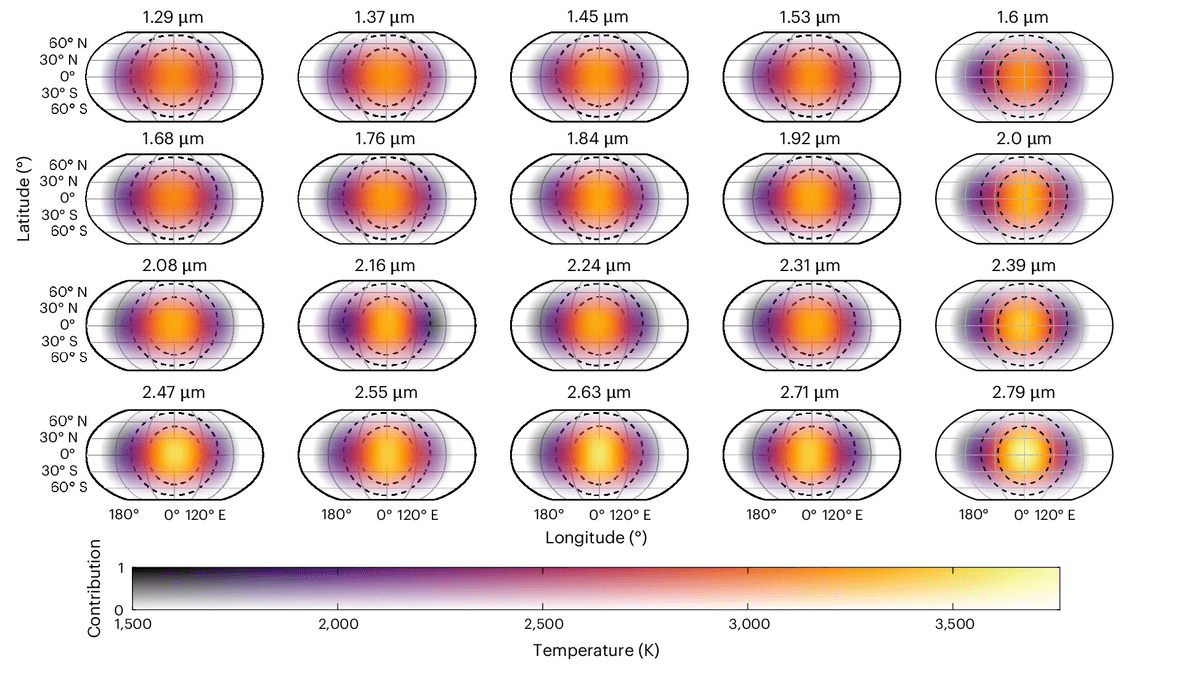
An international team of astronomers has shown for the first time that it is possible to map exoplanets using a technique called 3D eclipse mapping or spectroscopic eclipse mapping. By measuring the emission of specific wavelengths of light on a giant and very hot exoplanet, the team was able to work out the atmospheric variation of this distant world.
The rest of this article is behind a paywall. Please sign in or subscribe to access the full content.
The exoplanet in question is called WASP-18b. This is a hot Jupiter, 10 times the mass of our gas giant, but orbiting so close around its star that it does one orbit in just 23 hours. This proximity keeps the planet in a tidal lock, so this massive gaseous world is only showing one side to its star. JWST observations of this world had also revealed the presence of water vapor.
Previous observations of the planet allowed the creation of a 2D map by looking at this world in a single color. This new work uses a spectrograph, which breaks the light into wavelengths, so in many different colors. Each color tracks different molecules, temperatures, altitudes, or all three. By looking at the planet before and after it goes behind its star, the team was able to track changes and create this map.
“You’re looking for changes in tiny portions of the planet as they disappear and reappear into view,” lead author Ryan Challener, a postdoctoral associate from Cornell University, said in a statement. “So it’s extraordinarily challenging.”
“If you build a map at a wavelength that water absorbs, you’ll see the water deck in the atmosphere, whereas a wavelength that water does not absorb will probe deeper. If you put those together, you can get a 3D map of the temperatures in this atmosphere.”
Due to the planet being tidally locked, there is a hot spot in the atmosphere where it is much hotter than elsewhere. The team found that to be the case, and that the region is surrounded by a colder ring at the edges. There is also less water vapor in the hotspot compared to the rest of the atmosphere.
“We think that’s evidence that the planet is so hot in this region that it’s starting to break down the water,” Challener added. “That had been predicted by theory, but it’s really exciting to actually see this with real observations.”
Studying exoplanets directly is extremely difficult. This world is big and very close to its star, and it is shining with less than 1 percent of its star’s brightness. The achievement of this work will be repeated elsewhere, but it won’t be a walk in the park to get these intriguing 3D maps.
“It’s really exciting to be able to see an exoplanet in 3D. Most exoplanets are so close to their bright host stars that we can’t take images of them like the solar system planets – but spectroscopic mapping gives us a new window into their 3D structures,” co-author Dr Anjali Piette, from the University of Birmingham, said in a statement.
There will be more JWST observations of hot Jupiters to come, and soon, researchers will be able to compare the 3D maps of many different worlds.
The study is published in the journal Nature Astronomy.
Source Link: First-Ever 3D Map Of Planet Outside Solar System Reveals Distant World’s Hot Spot And Cool Ring